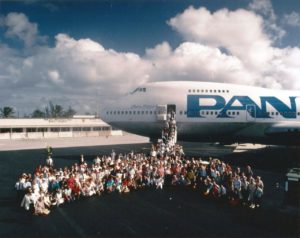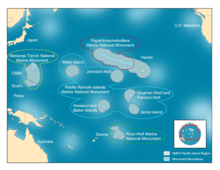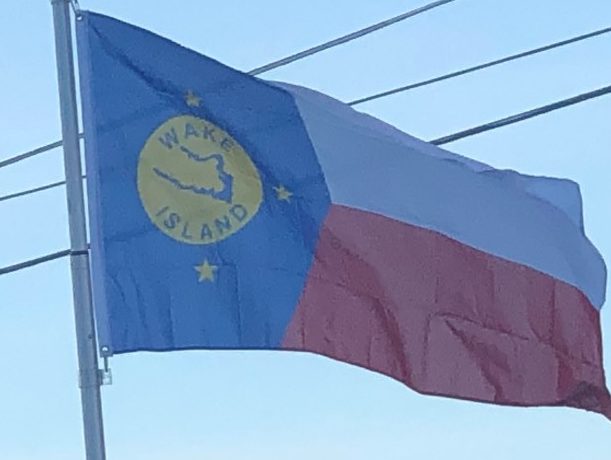On November 3 and 4, 1985, a group of 167 former American prisoners of war (POWs) visited Wake with their wives and children. This was the first such visit by a group of former Wake Island POWs and their families.
On November 24, 1985, a Pan American Airlines (Pan Am) Boeing 747, renamed China Clipper II, came through Wake Island on a flight across the Pacific to commemorate the 50th anniversary of the inauguration of Pan American China Clipper Service to the Orient.

Author James A. Michener and Lars Lindbergh, grandson of aviator Charles Lindbergh, were among the dignitaries on board the aircraft.
On March 12, 1986, the civil administrator of Wake Island, General Counsel of the Air Force Eugene R. Sullivan, proclaimed that March 22nd of each year will be celebrated as “Wake Island Day” on the atoll.
On December 8, 1991, a commemoration ceremony for the 50th anniversary of the Japanese attack on Wake Island was held with General Counsel of the Air Force Ann C. Peterson in attendance. The US flag on the pole in front of the airfield terminal building hung at half mast for 16 days to commemorate the number of days that the Americans held the island prior to surrendering to the Japanese 2nd Maizuru Special Naval Landing Force.
Missile Systems Testing Resumes and the U.S. Army Takes Control:
Subsequently, the island has been used for strategic defense and operations during and after the Cold War, with Wake Island serving as a launch platform for military rockets involved in testing anti-missile defense systems and atmospheric re-entry trials. Wake’s location allows for a safe launch and trajectory over the un-populated ocean with open space for intercepts.
U.S. Air Force Regains Control:
On October 1, 2002, administrative control and support of Wake Island was transferred from the U.S. Army to the U.S. Air Force’s 15th Wing, an aviation unit of Pacific Air Forces based at Hickam Air Force Base in Hawaii. The 15th Wing had previously been in control of Wake from July 1, 1973 to September 30, 1994. Although the Air Force was once again in control, the Missile Defense Agency would continue to operate the Wake Island Launch Center and the U.S. Army’s Ronald Reagan Ballistic Missile Defense Test Site would continue to maintain and operate the launch facilities and also provide instrumentation, communications, flight and ground safety, security, and other support.
On January 6, 2009, President George W. Bush issued Executive Order 8836, establishing Pacific Remote Islands Marine National Monument to preserve the marine environments around Wake, Baker, Howland, and Jarvis Islands, Johnston Atoll, Kingman Reef, and Palmyra Atoll.

The proclamation assigned management of the nearby waters and submerged and emergent lands of the islands to the Department of the Interior and management of fishery-related activities in waters beyond 12 nautical miles from the islands’ mean low water line to the National Oceanic and Atmospheric Administration (NOAA). On January 16, Secretary of the Interior Dirk Kempthorne issued Order Number 3284 which stated that the area at Wake Island assigned to the Department of Interior by Executive Order 8836 will be managed as a National Wildlife Refuge. Management of the emergent lands at Wake Island by the U.S. Fish and Wildlife Service, however, will not begin until the existing management agreement between the Secretary of the Air Force and the Secretary of the Interior is terminated.
